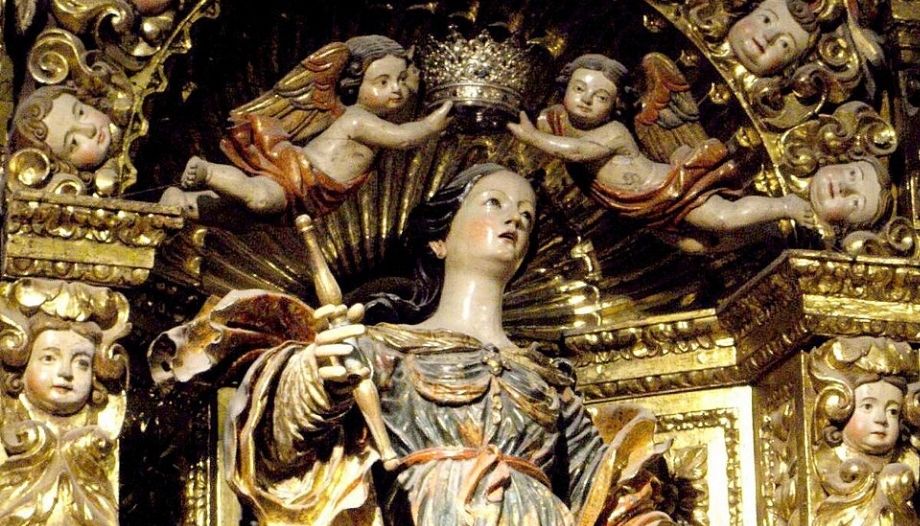Saint Orosia was a princess of Bohemia, from Slavic lands, currently the Czech Republic, who came to Spain (IX century) to marry, according to tradition. Despite seeking refuge in the Pyrenees, the retinue was discovered by Islamic troops, who killed everyone. Invited to abandon the faith in exchange for riches and other promises, Orosia rejected them and preferred to follow Christ. She died a martyr's death.
In the evangelization of Santa Orosia participated the patron monk of the Slavic peoples, St. Methodius. Together with St. Cyril, she is co-patron saint of Europe. She is the patron saint of Jaca and the Aragonese Pyrenees. The Martyrology Romano states briefly: "In Jaca, in northern Spain, Saint Eurosia (Orosia), virgin and martyr"..
Defender of Catholic doctrine
Saint Prospero of Aquitaine was born in Limoges (France) at the end of the IV century. He was a learned man, married and later became a monk in Marseilles, but not a priest. Faced with the danger of Pelagianism (denial of the necessity of divine grace for salvation), he defended the Catholic doctrine as it was taught St. Augustine. In 440 he accompanied to Rome the future Pope St. Leo the Great, who appointed him his chancellor and scribe. He went to hard workerHe died in Rome around 463.
Persecuted in Vietnam
Domingo Henares and Francisco Do Minh Chieu gave their lives for the faith in Vietnam in 1838. Domingo was born in Baena (Córdoba, Spain) in 1765. He joined the Dominicans and asked to be sent to Manila. There he was ordained, exercised the priestly ministry, and was sent to Vietnam. In 1800 he was named bishop. He worked in the evangelization and consolidation of the Christian community. In 1838 the persecution against Christians broke out and he was martyred.
Francisco Do Minh Chieu was born in Vietnam to a Christian family in 1808. He was a catechist and collaborator of Bishop Domingo Henares. During the anti-Christian persecution, he was identified for not stepping on crucifixes, and his life was taken.
Also celebrated today is St. Maximus, disciple of St. Ambrose and St. Eusebius of Vercelli, and first bishop of Turin. And Blessed Mary Lhuillier, who wanted to remain faithful to her religious vows and to the Church, and was guillotined in Laval during the French Revolution.








